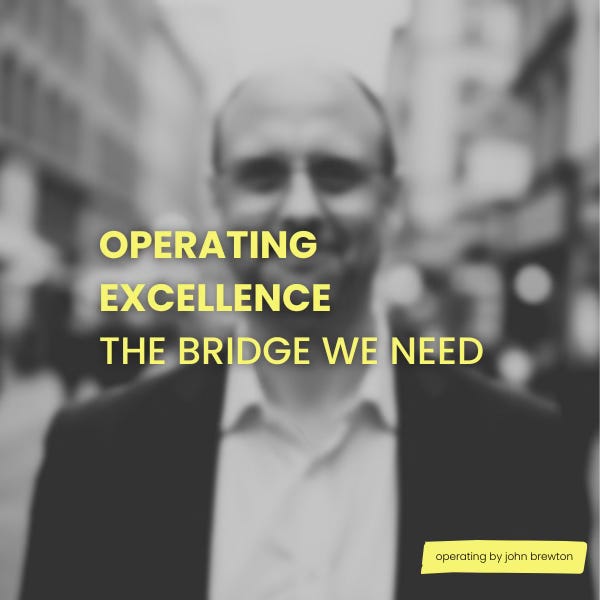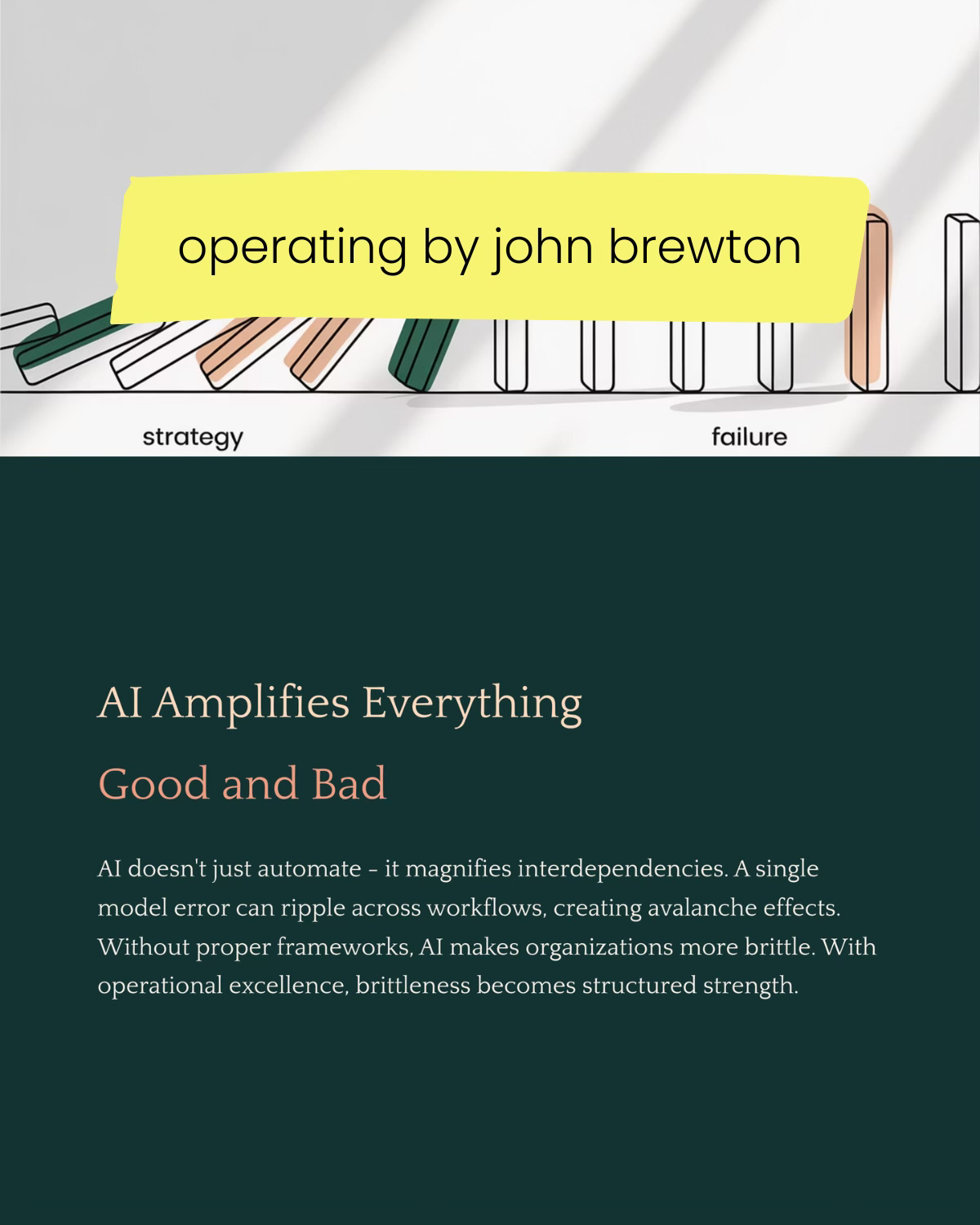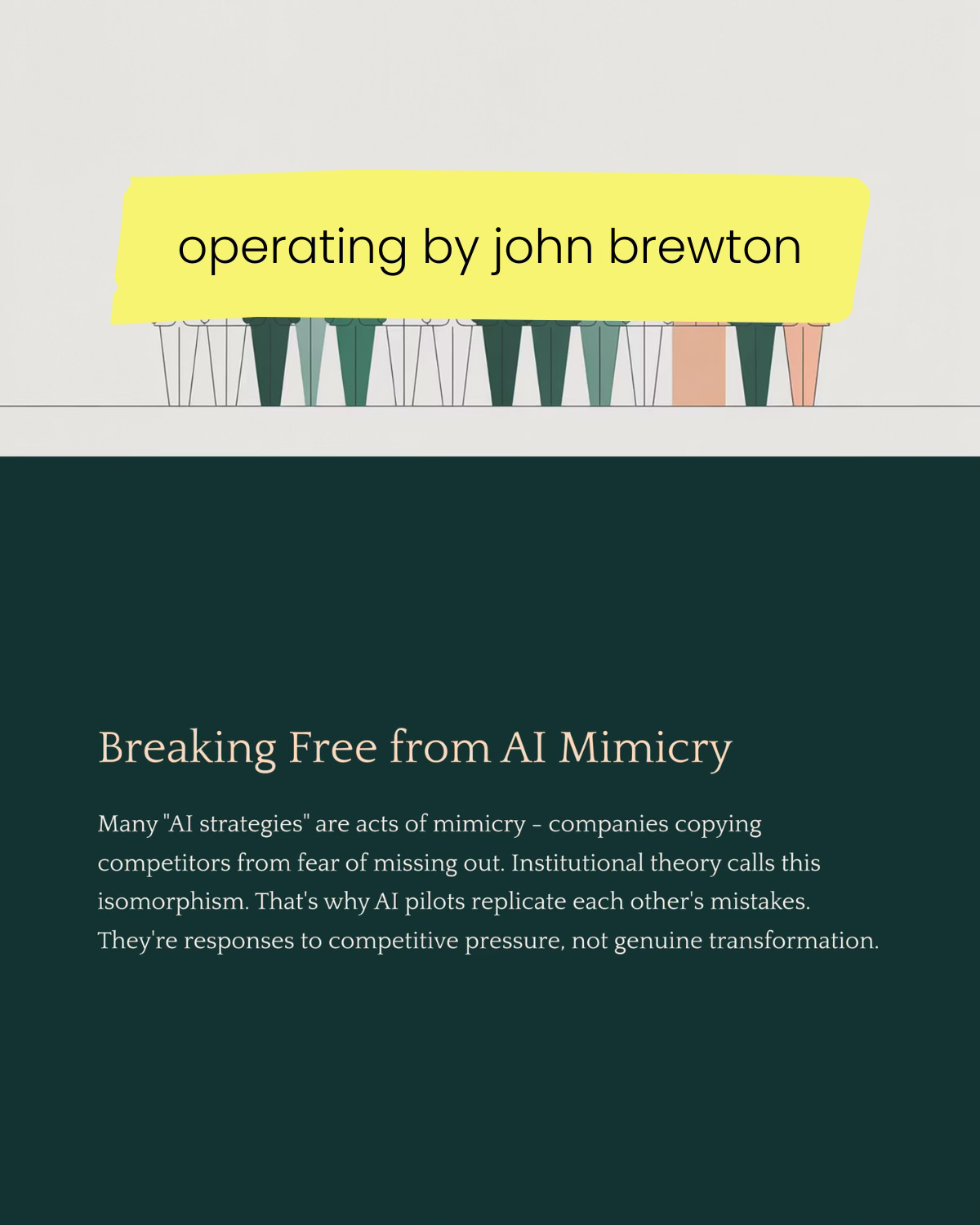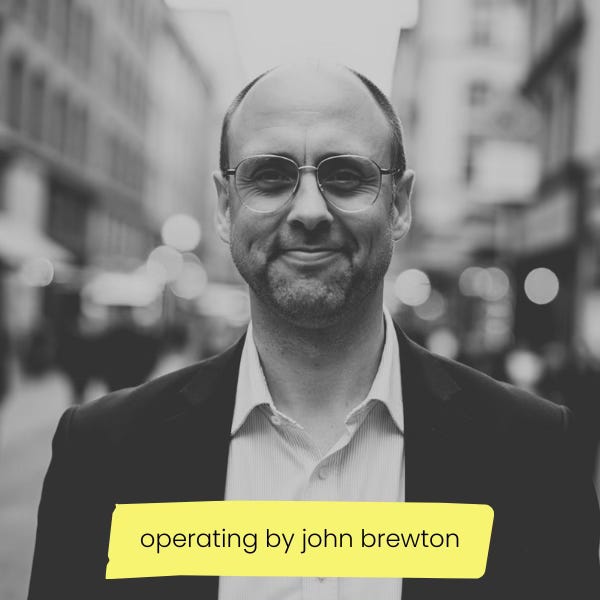New to Operating? Check out these reader favorites:
The Problem Behind the Hype
AI promises transformative productivity, yet most pilots collapse before scaling. MIT and McKinsey both report that 95% of generative AI pilots never reach production. The problem is rarely the model itself. AI works, but organizations fail to absorb it. Employees resist, workflows jam, systems amplify small errors into cascading disruptions, and leaders chase headline pilots that never tie into strategy.
Seminal thinking in the Operational Excellence space provides the bridge. Company operations are shifting into something more scientific and engineered. What began as a management discipline is increasingly an applied science of systems design. The same frameworks that have enabled effective human collaboration and engagement across organizations for decades will evolve and expand as new perspectives and methods are adopted. They will not just persist but become more potent in shaping both current companies and those yet to be built. Lean, Six Sigma, the Balanced Scorecard, and the McKinsey 7S endure not because they optimize yesterday’s factories but because they address the exact reasons AI adoption falters. They mitigate human psychology’s resistance to change, provide circuit breakers in complex systems, establish discipline that overrides organizational inertia, and prevent companies from copying competitors blindly. AI amplifies both excellence and dysfunction. Without operational discipline, it accelerates fragility. With it, companies will forge new paths ending at new destinations.
Why Frameworks Still Matter
AI amplifies interdependencies — a single model failure can ripple across workflows. Frameworks like Lean and the Balanced Scorecard act as circuit breakers.
Behavioral economics explains why workers resist AI even when benefits seem clear. Loss aversion makes people weigh potential losses twice as heavily as equivalent gains. When AI threatens familiar processes, resistance hardens. Lean and Six Sigma are powerful here, not just as process-improvement tools but as systems for reducing psychological threat. Lean’s emphasis on standardization documents the new state, reducing uncertainty. Six Sigma’s statistical discipline supplies evidence that risk is controlled and outcomes are predictable. They make change feel safer.
Complexity science adds another dimension. AI magnifies interdependencies. A single flawed model doesn’t stay isolated; it ripples through connected processes, creating what researchers call “avalanche effects.” This is why AI projects can fail catastrophically rather than gradually. Operational excellence frameworks act as circuit breakers. Lean provides clarity by mapping value streams and eliminating hidden waste. The Balanced Scorecard insists on systematic measurement across strategy, customer, process, and learning. The McKinsey 7S keeps both hard elements (strategy, systems, structure) and soft ones (values, skills, style, staff) in alignment. Each one contains potential cascade failures before they overwhelm the system.
Without these guardrails, AI simply makes organizations more brittle. With them, fragility turns into structure, where the absence of operational clarity turns flattening into chaos rather than agility.
From Resilience to Antifragility
Most companies talk about resilience, surviving shocks and returning to baseline. But in an AI-driven world, resilience is insufficient. Organizations need to get stronger under stress. Nassim Taleb calls this antifragility, systems that benefit from volatility.
Operational excellence frameworks make organizations antifragile. Lean’s Kaizen cycles thrive on continuous adjustment, turning small failures into feedback. Six Sigma’s DMAIC methodology (Define, Measure, Analyze, Improve, Control) translates variation into disciplined improvements. Together, they ensure that volatility from AI doesn’t destabilize but instead generates opportunities for learning and adaptation.
This is the quiet genius of operational excellence. Companies without it see volatility as risk. Companies with it convert volatility into capability. The difference is not whether AI creates stress but whether that stress becomes a liability or an advantage. It is the same distinction you highlighted when exploring how human judgment, empathy, and creativity become the premium skills once AI absorbs technical capacity.
Lean’s Kaizen cycles and Six Sigma’s DMAIC methodology transform volatility into continuous improvement — turning disruption into durable advantage.
The Adoption Threshold: Critical Mass and Social Proof
Technology adoption follows an S-curve. Below a critical mass, efforts stagnate. Above it, adoption becomes self-sustaining. Research on network effects shows that social proof mechanisms accelerate adoption once enough momentum is built.
Operational excellence is the mechanism for reaching this threshold. Standardization ensures early wins are replicable. Balanced Scorecard frameworks connect those wins to strategy, financials, and customers, making them visible to leadership and staff. Lean reduces waste and produces tangible gains in speed or cost that build credibility. Each win pushes adoption closer to critical mass. Once the threshold tips, AI transformation stops feeling experimental and becomes inevitable.
Firms without operational excellence rarely cross this threshold. They remain stuck in pilot purgatory, cycling through proofs of concept that never spread.
Breaking Free of Mimicry and Lock-ins
Most AI strategies are acts of mimicry. Operational excellence breaks this cycle by creating differentiated capabilities instead of copying competitors.
Why do so many AI strategies look alike? Institutional theory calls this isomorphism, the tendency of organizations to mimic competitors. Companies don’t adopt AI out of strategic clarity but out of fear of missing out. The result is shallow projects that replicate others’ mistakes.
Operational excellence prevents this. It grounds AI in differentiated systems. Lean and Six Sigma create new reinforcement loops that override dysfunctional path dependence. Rather than following historical inefficiencies, continuous improvement cycles and DMAIC methodology establish fresh patterns. AI adoption no longer accelerates old problems. It becomes a mechanism for reinvention.
Without these feedback loops, AI is just “garbage in, garbage faster out.” With them, AI avoids entrenching mediocrity and instead amplifies a company’s unique strengths.
Emergence, Scale-Free Effects, and Organizational Metabolism
The most compelling reason to combine AI with operational excellence is the newly research field of operational emergence. Complexity science shows that new properties arise in systems when disciplined components interact under stress. Neither AI nor OE alone can create these properties, but together they generate capabilities that neither possesses in isolation.
Scale-free network research reveals that transformation doesn’t spread evenly. A small number of highly influential processes exert outsized influence. Focus AI on those “critical few” and the impact ripples systemwide. Balanced Scorecard frameworks help identify those leverage points. Lean and Six Sigma ensure they scale sustainably, with waste removed and variation controlled.
The metabolism metaphor makes this vivid. Organizations, like organisms, have metabolic rates: the relationship between resources consumed and value produced. AI accelerates metabolism. But if efficiency hasn’t been established first, acceleration leads to metabolic collapse, energy expended faster than value created. Operational excellence optimizes metabolism before AI scales it, ensuring value creation grows sustainably rather than destructively.
Operational Excellence as Applied Complexity Science
Operational excellence is more than management practice. It is applied complexity science.
It mitigates human bias by reducing loss aversion. It prevents cascade failures by enforcing discipline. It creates antifragile loops that grow stronger under stress. It breaks path dependence and resists mimicry. It directs scarce AI resources to the critical few leverage points. It balances organizational metabolism before scaling.
The old frameworks are not relics. They are bridges. And only by walking across them can companies move from AI hype to operating reality, not just surviving disruption but creating new capabilities that neither humans nor machines could achieve alone. And as these technologies advance, operational excellence itself will evolve into something even more scientific and engineered. The very systems that have enabled collaboration and engagement for decades will become more powerful, expanding their influence in today’s firms and in those not yet founded. This evolution will ensure that operational excellence remains the foundation of competitive advantage in the age of AI.
Five Key Operating Takeaways
✅ Operational excellence is a bridge, not a relic. It translates AI potential into organizational reality.
✅ Frameworks mitigate risk and resistance. Lean and Six Sigma reduce loss aversion and provide psychological stability.
✅ Discipline prevents cascade failures. Measurement and alignment create circuit breakers for AI-driven complexity.
✅ Antifragility beats resilience. Continuous improvement and DMAIC cycles thrive on volatility, turning disruption into strength.
✅ Focus on the critical few. AI combined with operational excellence scales disproportionately when applied to high-leverage processes.
Recommended Further Reading
✅ High Output Management by Andy Grove — a foundational text on operational discipline, measurement, and management systems.
✅ The Toyota Way by Jeffrey Liker — the definitive book on Lean principles and the Toyota Production System.
✅ The Balanced Scorecard by Robert Kaplan and David Norton — introducing the framework that connects strategy to performance metrics.
✅ Quality Control Handbook by Joseph Juran — a comprehensive treatment of quality management and the roots of Six Sigma thinking.
✅ Antifragile by Nassim Nicholas Taleb — exploring how systems can grow stronger through volatility, with direct relevance to operational excellence in the AI age.
John Brewton documents the history and future of operating companies at Operating by John Brewton. He is a graduate of Harvard University and began his career as a Phd. student in economics at the University of Chicago. After selling his family’s B2B industrial distribution company in 2021, he has been helping business owners, founders and investors optimize their operations ever since. He is the founder of 6A East Partners, a research and advisory firm asking the question: What is the future of companies? He still cringes at his early LinkedIn posts and loves making content each and everyday, despite the protestations of his beloved wife, Fabiola, at times.







